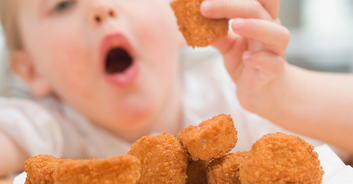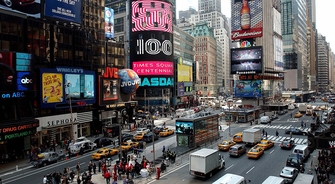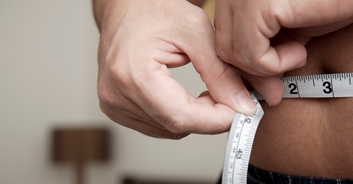Australia is the land of sun, sea, surfing and beachside barbecues. A gap year favourite offering glistening coastlines, golden deserts and sprawling grasslands, its natural beauty is rivalled only by its vibrant nightlife. However, somewhere between the city and suburbia, there is a growing drug problem.
Australia has the highest use of methamphetamine in the English-speaking world. Known as crystal meth or “ice”, it is cheap and highly addictive. It’s a growing phenomenon which is putting strain on public services, tearing apart families and taking lives.
According to the US National Survey on Drug Use and Health, around 0.4 per cent of Americans have used the substance before. By comparison, according to the National Drug Strategy Household Survey, a staggering 6.4 per cent of Australians have tried it.
According to researchers Coomber, Morris and Dunn, the discourse on drugs has been hugely affected by “exaggeration, distortion, inaccuracy, and sensationalism”. So just what is the actual cause of Australia’s meth problem?
Between 1996 and 1997, 156 kilos of methamphetamine were seized by Australian customs. However, between 2001 and 2002, this had increased tenfold - to 1.8 tonnes. In 2014, Australian Federal Police seized 849 kilos in a single bust. Clearly, the demand has risen dramatically.
Yet attitudes towards crystal meth don’t appear to have changed. It is still stigmatised and derided and is often associated with homelessness and addiction. But perhaps this is exactly the reason that users become trapped.
According to the Australian Institute of Health and Welfare, around 90 per cent of Australians disapprove of personal methamphetamine use with around 85 per cent opposing legalising the drug. Meth users are often mocked or feared - creating a stereotype similar to the Victorian notion of a “dope-fiend”.
Of course, there are many other drugs in Australia. Research shows that both heroin and marijuana are considered to be more of a problem by Australians. While the notion of a "gateway drug" would be mocked by many an expert, there are also fears that the prevalence of amphetamine - especially the street drug, speed - helps to normalise hard drugs within a culture that is already touted as fun-loving and hedonistic.
However, in trying to understand the drug problem in Australia, one must remember that it is an island nation. In contrast to the US, which has a near-constant stream of cocaine and heroin flowing over the border from Mexico, Australia’s nearest neighbours include China and Southeast Asian countries such as Myanmar and Laos.
These countries typically don’t produce much cocaine or heroin - but instead produce some of the raw materials needed for the manufacture of methamphetamine in colossal quantities. Shipments of ephedrine and pseudoephedrine are imported legally, for industrial production, but are often then diverted towards meth labs.
There may be no restrictions on these chemicals in the source country and though there are import restrictions imposed by Australia, the chemicals which, in turn, are used to manufacture these precursor chemicals don’t have the same restrictions placed on them.
Nonetheless, Detective Superintendent Tony Cooke, the New South Wales Police Drug Squad commander, says Australia is seeing “an increase in importation of finished product.”
It is hoped that a national end-user declaration system will begin to take effect and tighten controls on chemicals associated with methamphetamine production. Meanwhile, an analysis of Queensland’s wastewater suggests that its major cities have seen an increase in methamphetamine use of nearly 500 per cent since 2009. Furthermore, April of last year saw a seizure more than 900 kilos of methamphetamine - worth close to a billion Australian dollars ($742 million).
However, it is often rural communities which are the most badly affected - due to the lack of support. Drug rehabilitation programmes are usually focussed in cities, with little hope of reaching far-flung townships.
Again due to its geography, Australia is known for the high prices and low purity of its drugs. Comparatively, methamphetamine is far cheaper in Australia but still so overpriced - by international standards - that it is an attractive market for the criminal gangs who produce and traffic it.
In Queensland’s Yeppon, a mother told TIME of how her daughter had spent $30,000 of inheritance money on methamphetamine in just six months. While this sounds like an unbelievable sum of money to spend in such a short time, it may have equated to somewhere between 60 to 80 grammes.
According to the United Nations Office on Drugs and Crime, the average street price of methamphetamine in China is $80 per gramme. Yet in Australia, it costs $500 per gramme. Granted, this seems extortionate enough to put off even the wealthiest of potential users. However, it is far more cost-effective than other drugs available in the country and one point of methamphetamine - one tenth of a gramme - may be enough to sustain a new or moderate user for a whole weekend.
If this person’s use of the drug continues and increases, their tolerance will increase also. As dabblers become users and users become addicts, millions of dollars are wasted and families are torn apart.
Its victims aren’t always what you’d expect, either. Former addicts include Olympic gold medal diver Matthew Mitcham and world champion surfer Tom Carroll. “The drug was incompatible with surfing,” Carroll states. “I was way too sped up to get into synch with the rhythm of the waves. Normal-circumstance surfs for me would last one to one and a half hours. Under the influence of meth, I struggled to stay in the water for 15 to 20 minutes.” Ice, he recalls, “almost robbed me of my life, it certainly robbed me of time with my kids and threatened to take everything I had built in my life away.”
Clearly, there are a number of interrelated factors which cause a vicious cycle of deprivation, desolation and dependency. Users rack up enormous debts and have to beg, borrow and steal to feed their addiction. Australia may be known for its beaches and barbecues, but there’s a dark side to the land of surfing and sunshine.










